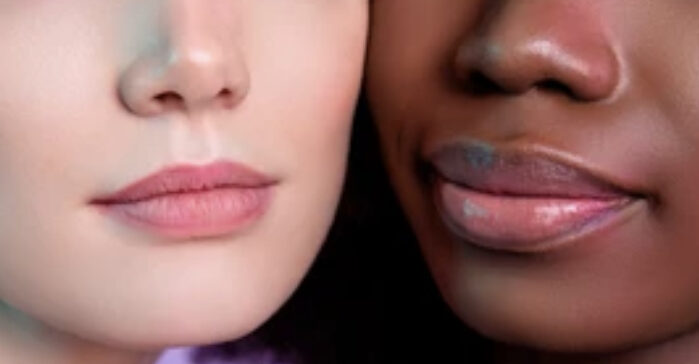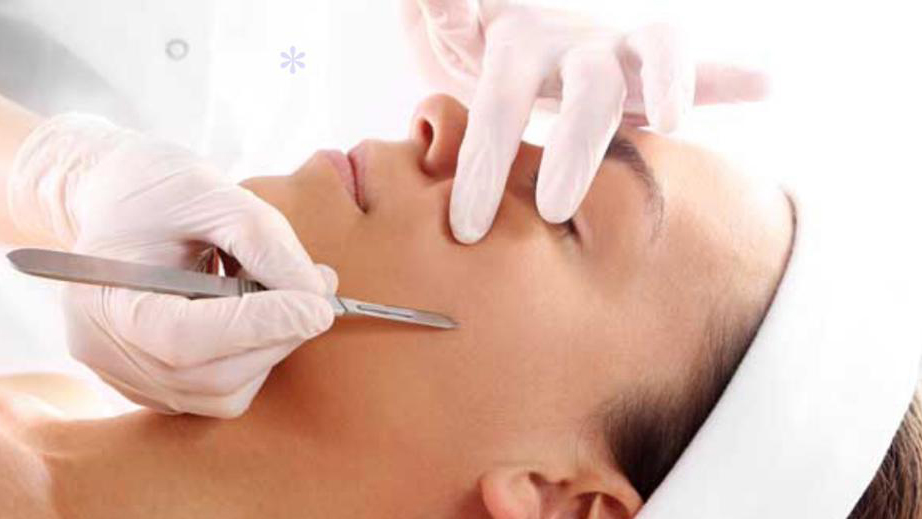DERMAPLANING
Dermaplaning is a method of exfoliation that consists of using a 10 gauge scalpel to gently scrape off the top layer of dulling dead skin cells in order to reveal a smoother, brighter complexion. Sounds scary, right? It really isn’t, as long as you’re in the right hands. “
Dermaplaning is a favorite in the entertainment industry, specifically among models and actresses. Why? It also eliminates that annoying peach fuzz that cakes up in makeup and can be enhanced by harsh production lighting and high-definition cameras. “Dermaplaning removes all the dead skin cells and also the facial hair, leaving the surface very smooth,” explains Wright. Dermaplaning also allows for greater penetration of skincare products and creates a flawless canvas for makeup to glide on smoothly. In fact, cosmetic dermatologists often use dermaplaning to help prepare skin for more intrusive procedures such as laser treatments and chemical peels.
Wondering if you should try dermaplaning versus microdermabrasion? They are both forms of physical exfoliation, but the methods are very different. Microdermabrasion sands and suctions dead skin cells, which also helps to uproot clogged pores around the nose, mouth and chin. Dermaplaning safely scrapes off the top layer of skin, so it is well suited for drier skin types and anyone who wants to get rid of peach fuzz. But, keep in mind, both methods are good for almost everyone and it could just boil down to your personal preference.
WHO IS DERMAPLANING FOR?
Dermaplaning is recommended for all skin types except those with acneic skin. If you have deep cystic acne, wait until breakouts are clear before trying this treatment. As always, also discuss any allergies or skin sensitivities before starting a treatment.
This is a great treatment if you are pregnant or nursing and want exfoliation without the risk of harsh chemicals absorbing into the blood stream and potentially harming your baby.
HOW IS DERMAPLANING DONE?
Dermaplaning is a painless procedure and can be compared to the sensation of shaving your legs, but in this case, it’s on your face.
First, the aesthetician will cleanse and thoroughly dry your skin. Next, she’ll pull an area of your skin taut with one hand, and hold a sterile 10 gauge blade at a 45 degree angle in the other hand and use short, swift strokes to scrape off dead skin cells and peach fuzz.
book a dermaplaning treatment today
HOW LONG DOES IT TAKE?
About 30 minutes
WHAT IS THE COST OF DERMAPLANING?
£70
WHAT ARE THE SIDE EFFECTS OF DERMAPLANING?
There are no side effects and zero downtime. After the treatment, your skin will be highly sensitive to sun exposure and may already look very pink, so be sure to wear a broad-spectrum sunscreen with SPF 30 or higher to reduce the risk of hyperpigmentation.
WHAT ARE THE BENEFITS OF DERMAPLANING?
You’ll immediately look more radiant with a more even skin tone and texture. All of your peach fuzz will be gone, which is why first-timers say their skin has never felt so soft before.
RECOMMENDED COURSE FOR OPTIMAL RESULTS?
Dermaplaning removes 21 days worth of dead skin cells, so it’s best to allow the skin to complete its rejuvenation cycle before your next treatment.
WHO SHOULD ADMINISTER THIS TREATMENT?
Dermaplaning should be administered by a board certified dermatologist or licensed aesthetician who specializes in this procedure. “An aesthetician has to be licensed in the state she is practicing in. There are several different schools you can attend, but ultimately you have to pass a state administered written and practical exam to get your license,” explains Wright. It’s always a good idea to ask how long they’ve been administering dermaplaning to know their level of experience—there’s a very sharp blade involved!


